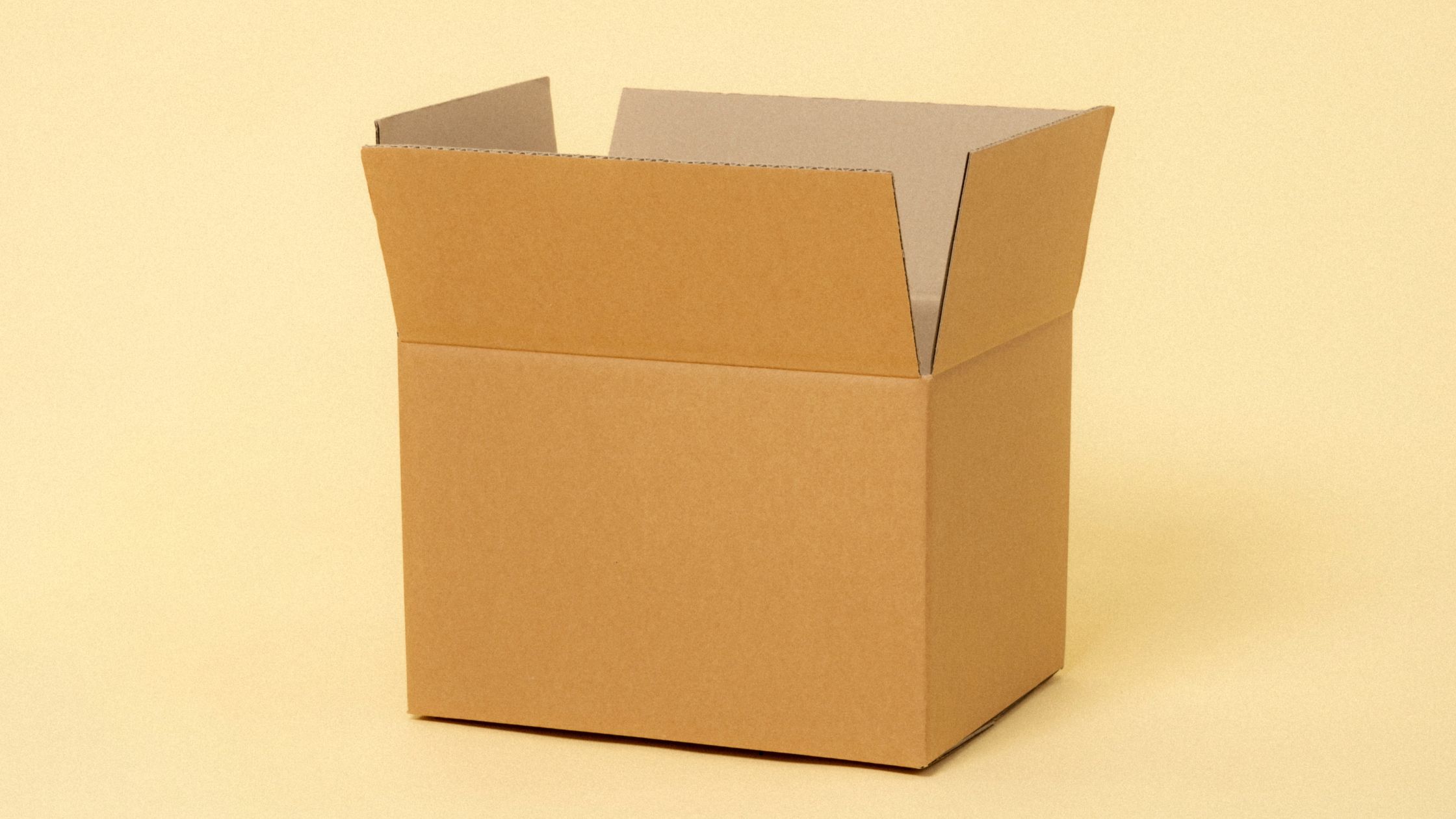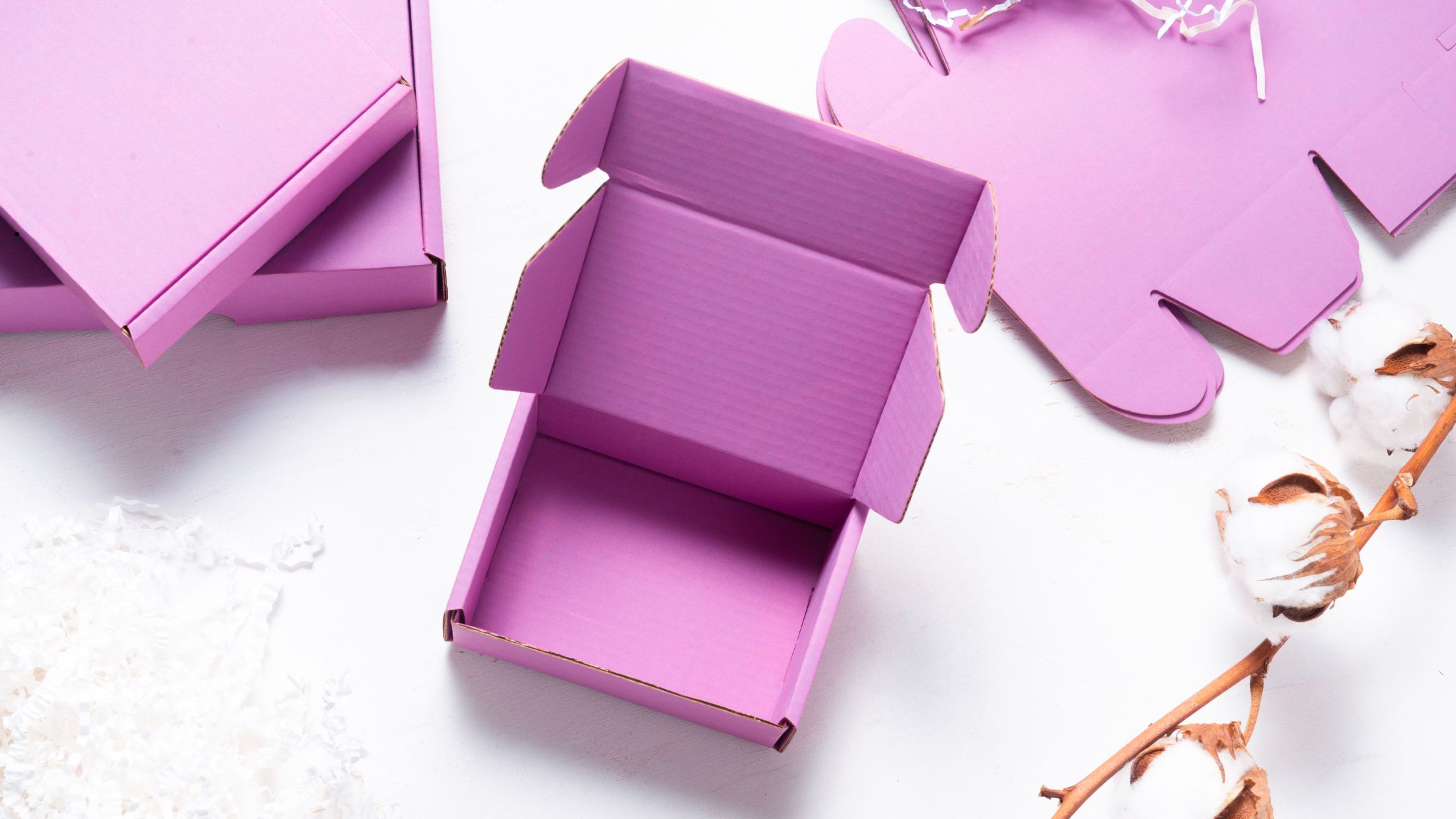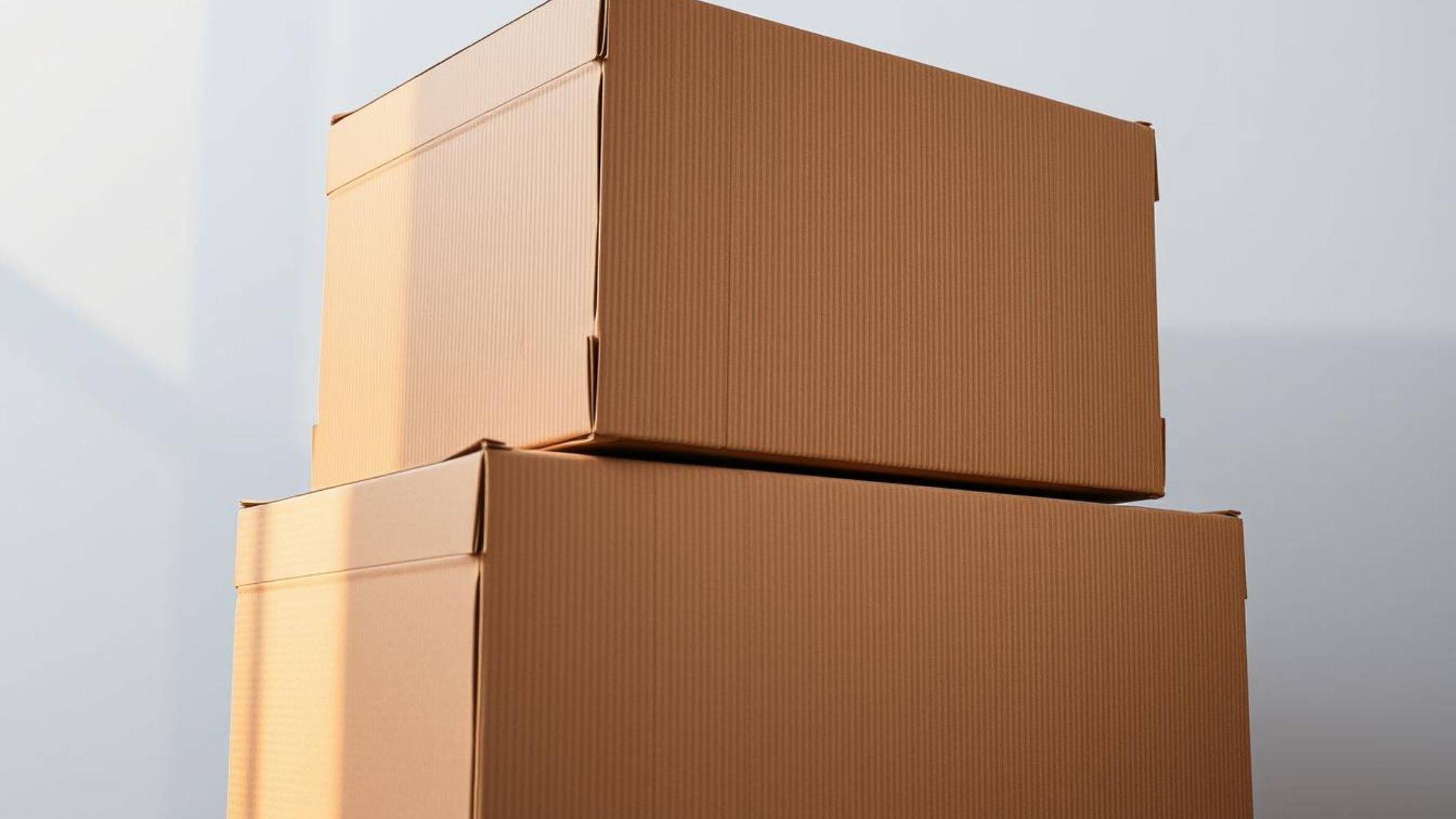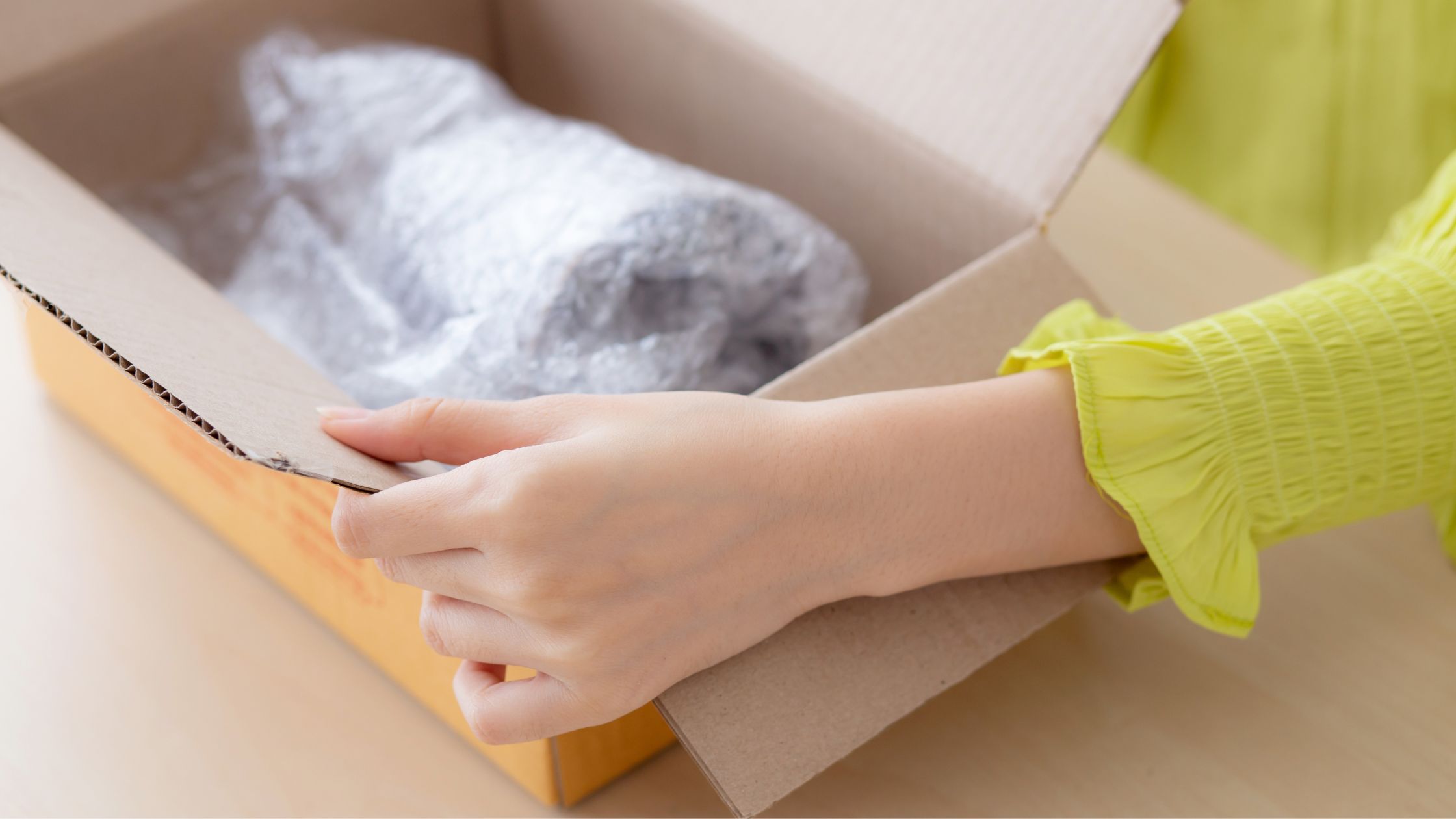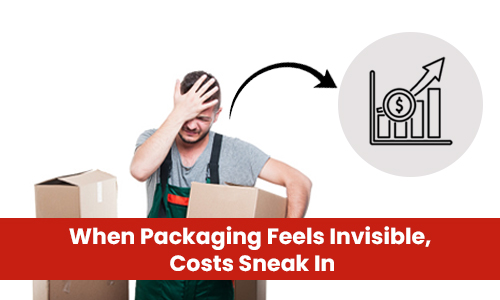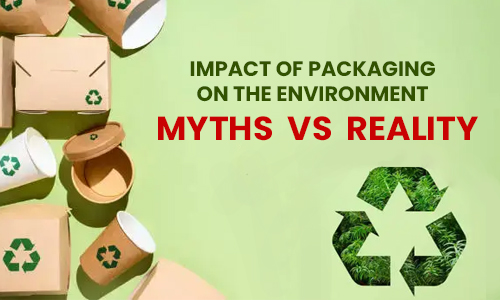
The Impact of Packaging on the Environment: Myths vs. Reality

A large number of the items we use every day come in packages. However, a lot of the time, individuals don't realize how it impacts the environment. Reduced environmental impact is something both the packaging industry and consumers want to see happen. We must study eco-friendly packaging reality, not myths, in order to achieve this.
Almost everything we buy needs to be packaged in some way. Packaging waste increases along with the number of goods purchased. This raises questions about the sustainability and carbon footprint of packaging. But packaging is also essential for product delivery, safety, and minimizing food waste due to spoiling.

The goal of this blog is to sort packing facts from fantasy. There are just too many misconceptions regarding things like plastic. Understanding the true effects of packaging, from manufacture to disposal, can help us make more informed choices. Industry may also design and market with a complete understanding of the life cycle.
Myth 1: All Plastic Packaging is Bad for the Environment
Many think plastic is equally harmful. But this isn't true. Plastic's impacts vary based on type, how it's used, and what happens after.
Some think plastic never breaks down. This needs to be corrected - it depends on the plastic. Packaging blocks spoilage, letting food last longer with less waste from rotting. This reduces emissions from extra trips to the store versus bulk eco-friendly packaging for small businesses.
Types like PET (#1) and HDPE (#2) can be recycled into new products over and over if systems exist. With improvements, plastic recycling success would climb. Problem plastics cause more harm due to chemicals or recycling issues. But new eco-friendly resins from plant waste show promise.
Bottle and container recycling rates could be increased by packaging produced from single materials or leftovers from agriculture. Manufacturers maximize the use of plastic by designing lighter products that use less material. There are more reusable choices available for shipping containers.
Myth 2: Biodegradable Packaging is Always Better
Various forms of biodegradable packaging exist, including paper-based packaging derived from bamboo or sugar cane, and plastic-based packaging derived from cellulose or polylactic acid (PLA). These are touted as being more eco-friendly since they break down naturally over time when exposed to living organisms like bacteria and fungi.
However, the conditions required for complete biodegradability are not always present in real waste streams. Eco-friendly packaging needs very specific industrial composting conditions of high heat and humidity to fully decompose within a few months. If not, biodegradable materials just fragment into tiny waste particles that continue to contaminate the environment. The conditions in a landfill are unsuitable because they lack moisture and oxygen. Over several years, items may partially disintegrate and release methane, a strong greenhouse gas.
Even in commercial compost facilities, bioplastics can contaminate recycling streams for conventional plastics. The two materials cannot be economically separated. Biodegradable labels or plastic bags in the recycling bin mean the whole load may be sent to the landfill. They must be removed, increasing costs.
Reusable containers like glass bottles and recyclable polymers like PET and HDPE are more environmentally friendly choices. Rather than ending up in landfills, those can be repeatedly turned into new materials with the correct repair structures. Any kind of single-use solution should aim to reduce superfluous packing by using bulk containers or packaging-free shopping. In other words, sustainability and biodegradability are no longer synonymous, and there are often more environmentally friendly alternatives.
Myth 3: Recycling is the Ultimate Solution
Recycling packaging avoids the extraction of raw materials and maintains the flow of valuable resources. An item is taken to a material recovery centre for sorting when it is collected curb side, such as an aluminium can or glass bottle. Recyclables are sorted by kind and placed into bales for remanufacturers using automated separators, magnets, and screens.
Although recycling provides advantages for the environment, it is not without its restrictions. Plastic breaks down with each recycling cycle, hence not all materials can be recycled indefinitely. Certain objects, either due to contamination or the presence of non-separable material types, are not recyclable at all. "Wishcycling" is the practice of throwing anything with a recycling emblem into a bin without first making sure it complies with regulations.
Wishcycling leads to contamination that ruins entire bales of would-be recyclables. Once contaminated, the loads may have to be discarded instead of remade into new packaging or products. Educating consumers is key so only accepted items truly suitable for recycling end up in bins. Ultimately, there is also a finite demand for recycled feedstocks compared to products made from virgin raw materials.
Recycling on its own won't be sufficient given these limitations. While a crucial component of sustainable eco-friendly product packaging solutions, its practical function is to recover materials that are already in use as opposed to continually increasing the demand for eco-friendly packaging. Overall, the benefit of reducing excess, needless, or low-value packing is substantially greater when achieved through reduced consumption or reuse models.
Reusables reduce the number of steps in the cycle from manufacturing to disposal, such as glass bottles and Bring Your Own Container programs. Reuse behaviours still require strong industry backing in order to scale up in a way that is convenient for customers. Reducing, reusing, and high-quality recycling are the complementing techniques that make up the most successful overall strategy, in that order.

Reality Check: The Environmental Impact of Different Packaging Materials
To understand packaging's true impact, you must look at the full life cycle from sourcing raw materials to disposal or recycling. Life cycle assessments (LCAs) study each stage systematically. Some key findings from LCA research:
Plastic often requires less energy to produce than glass or metal. It also makes packaging lighter, lowering transportation fuel use. However, plastic recycling rates vary widely and plastic persists in landfills. Some plastic types have a smaller carbon footprint than others.
Aluminium production is energy-intensive but it can be recycled infinitely with no loss in quality. Recycled aluminium uses only 5% of the energy of primary aluminium. It outweighs the carbon cost when over 75% is recovered after use.
Glass is made from plentiful eco-friendly packaging materials but it is heavy and breaks easily. Melting glass for recycling also uses significant fuel. Yet jars withstand numerous trips and glass can re-enter the food chain indefinitely.
Papermaking emits fewer emissions than most other options. However, paper packaging often has short usage times before getting thrown away. Its carbon impact depends greatly on forestry practices and whether it gets recycled or composted after use.
Innovations and Solutions in Sustainable Packaging
Several promising areas are helping to shape the future of greener packaging:
- Alternative materials from renewable plant sources like cellulose, PLA plastic from crops, mushroom packaging, and seaweed are gaining popularity.
- Smart packaging uses sensors and indicators to monitor freshness and reduce waste from spoilage. Digital watermarks can optimize recycling sorting.
- More companies employ lightweight and concentrated packaging to minimize material needs. Flexible and reusable formats are also expanding for goods like toothpaste and food delivery.
- Advances in recycling technologies extract more value from waste streams. Chemical recycling and plastic-to-plastic methods boost recycling rates.
- Deposit return schemes provide incentives to return reusable containers through refunds. Countries leading here see 90% aluminum can and glass bottle retrieval rates.
- Brands commit to sustainable goals and use evidence-based design thinking. Ambitious circular economy pledges leverage Eco Design across entire supply chains.
Government actions also propel change through landfill bans, minimum recycled content standards, extended producer responsibility laws, and public procurement preferences. When supported by education programs, these shape consumer habits toward reuse and proper recycling over time.
Practical Tips for Consumers
Making smarter choices as shoppers support more sustainable custom packaging solutions:
- Reuse packaging when possible - repurpose boxes, jars, and silos rather than immediately throwing them away. UCanPack's shipping boxes are durable and can be reused for storage.
- Buy in sizes that you'll fully use before expiring to reduce overpackaging waste.
- Opt for reusable water bottles, coffee cups, and shopping bags to cut disposables.
- Place loose recycling properly - empty, clean, dry, and separated. Contamination ruins whole batches.
- When shopping online, choose companies with plastic-free or reduced packaging options.
- Ask retailers if they'll accept packaging returns through a "take-back" program.
- Support brands committed to traceable, recycled content through certification labels. Look for products in FSC foam sheet like UCanPack uses.
- Leave feedback requesting more sustainable packaging solutions options to show producers demand exists. A few moments of commenting affects major change.
Small actions multiplied by conscious consumers motivate brands to innovate greener solutions. United, we can shift the entire system towards less waste.
Conclusion
Packaging has a complex influence on the environment, with various opinions that differ from the truth. Reduction and reuse offer even more opportunity to reduce the environmental impact of ecofriendly packaging, even as recycling retains its value. Innovation is using new materials, forms, and system designs to solve historical problems.
Brands need to respond to consumers' growing concern for sustainability by providing solutions based on complete lifecycle understanding and scientific research. Local businesses setting the standard include UCanPack. UCanPack, an Atlanta-based company, provides waste-free reusable, refillable, and plant-based packaging solutions. Their sturdy packaging and dependable transportation materials also translate into fewer packages being returned due to damage.
Increased collaborations between buyers and suppliers of sustainable options, such as UCanPack, can further advance the goal of reducing the environment-friendly packaging by offering creative packaging solutions that consumers will be happy to support.







